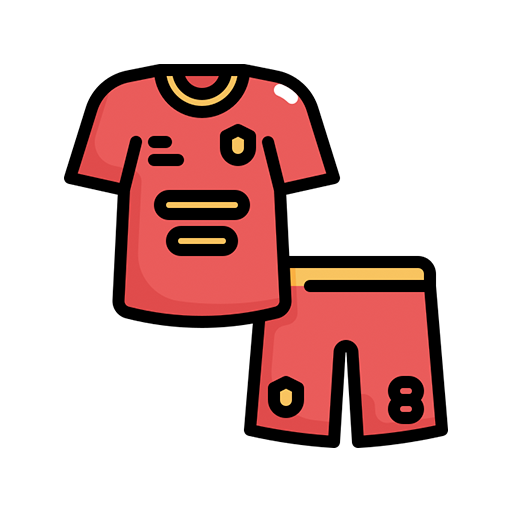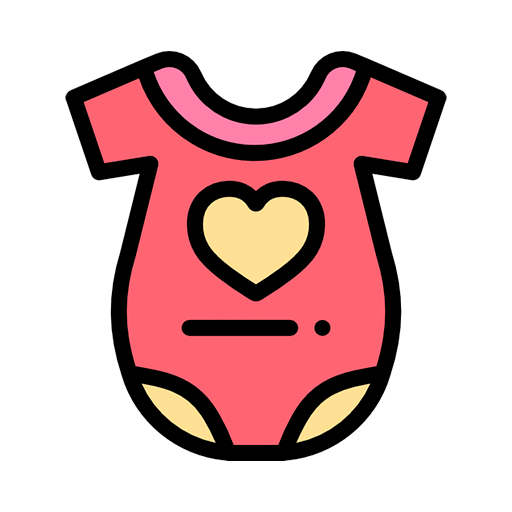
Wearing and Changing Infant Onesies
Share
How to Properly Dress Your Baby in an Infant Onesie?
Dressing your baby in an infant onesie is a simple and important task. Here are some steps to follow to ensure that you properly dress your baby in an infant onesie:
Lay your baby down on a flat surface: It's important to have a flat surface, like a changing table or a bed, to lay your baby on while dressing them in an onesie. This will help you to dress your baby in a safe and comfortable manner.
Slide the onesie over their head: Gently slide the onesie over your baby's head, being careful not to pull or tug too hard. If your baby is fussy or doesn't like things going over their head, try using onesies with envelope necklines or snap closures.
Fasten the snaps at the bottom: Once you have the onesie in place, fasten the snaps at the bottom. Make sure the snaps are aligned properly and that the onesie is snug but not too tight. This will help keep your baby's diaper in place and prevent any accidents.
Check for comfort: Before you finish dressing your baby, make sure the onesie is comfortable for them. Check that the fabric isn't too tight or itchy and that your baby can move their arms and legs freely.
In conclusion, dressing your baby in an infant onesie is an important part of keeping them comfortable and safe. By following these simple steps, you can ensure that your baby is properly dressed in an onesie.
How to Choose the Right Onesie Style and Size?
Choosing the right onesie style and size is important for your baby's comfort and safety. Here are some tips to help you choose the right onesie style and size:
Consider the season: Depending on the season, you may want to choose different onesie styles. For colder weather, long-sleeved onesies or footed onesies can help keep your baby warm. For warmer weather, sleeveless or short-sleeved onesies can help keep your baby cool.
Think about the occasion: Some occasions may call for special onesie styles, such as holiday-themed onesies or dressy onesies for formal events. Consider the occasion and choose a onesie style that fits the occasion.
Choose the right size: It's important to choose a onesie size that fits your baby comfortably. Onesies that are too small can be uncomfortable and restrict movement, while onesies that are too big can cause your baby to slip out of them or become tangled. Follow size charts and measurements when choosing the right onesie size.
Look for easy-to-use features: Onesies with envelope necklines or snap closures can make it easier to dress and undress your baby, especially if they don't like things going over their head. Look for onesies with features that make dressing and changing your baby easier.
In conclusion, choosing the right onesie style and size is important for your baby's comfort and safety. By considering the season, occasion, size, and features, you can choose the right onesie for your baby.
What Are the Different Designs and Styles of Infant Onesies?
Infant onesies come in a variety of designs and styles to suit different needs and preferences. Here are some of the most common onesie designs and styles:
Short-sleeved onesies: Short-sleeved onesies are perfect for warmer weather or for layering under other clothing.
Long-sleeved onesies: Long-sleeved onesies are ideal for cooler weather or for babies who need extra warmth.
Sleeveless onesies: Sleeveless onesies are great for warm weather and can be paired with shorts or pants.
Footed onesies: Footed onesies have attached feet to keep your baby's feet warm and cozy. They are ideal for colder weather.
Onesies with envelope necklines: Onesies with envelope necklines have an overlapping neckline that makes it easier to slide the onesie over your baby's head. This design is helpful for babies who don't like things going over their head.
Onesies with snap closures: Onesies with snap closures make it easy to dress and undress your baby, especially when changing diapers.
Dressy onesies: Dressy onesies are designed for special occasions and come in a variety of styles, such as collared onesies, onesies with ties, and onesies with ruffles.
Printed onesies: Printed onesies come in a variety of designs and patterns, such as animal prints, floral prints, and cartoon characters.
In conclusion, there are many different designs and styles of infant onesies to choose from. By considering your baby's needs and the occasion, you can choose the right onesie design and style for your baby.
How to Change a Diaper While Your Baby is Wearing an Onesie?
Changing a diaper while your baby is wearing an onesie can seem like a daunting task, but it's a skill that can be easily mastered. Here are some steps to change a diaper while your baby is wearing an onesie:
Prepare for the diaper change: Before you begin, make sure you have everything you need within reach, such as a clean diaper, wipes, and diaper cream.
Unfasten the snaps at the bottom: Unsnap the bottom snaps of the onesie to give you access to the diaper area. Be careful not to pull or tug too hard on the onesie, as this could upset your baby.
Slide the onesie up: Gently slide the onesie up your baby's chest to reveal the diaper area. Be careful not to get any poop or pee on the onesie.
Change the diaper: Remove the soiled diaper, wipe your baby clean with wipes, and apply diaper cream if needed. Put on a clean diaper and fasten it securely.
Slide the onesie back down: Once you have finished changing the diaper, slide the onesie back down over your baby's chest and fasten the snaps at the bottom.
Check for comfort: Make sure the onesie is comfortable for your baby and isn't too tight. Check that the fabric isn't bunched up and that your baby can move their arms and legs freely.
In conclusion, changing a diaper while your baby is wearing an onesie may seem challenging at first, but with practice, it can become a quick and easy task. By following these steps, you can change your baby's diaper while keeping them comfortable and safe in their onesie.
What Are the Material and Quality Requirements for Infant Onesies?
Infant onesies should be made of high-quality materials that are safe and comfortable for your baby. Here are some material and quality requirements to consider when selecting infant onesies:
Soft and breathable materials: Look for onesies made of soft, breathable materials like cotton. These materials are gentle on your baby's skin and help prevent rashes and irritation.
Hypoallergenic materials: Some babies have sensitive skin and can develop allergies to certain materials. Look for onesies made of hypoallergenic materials that are less likely to cause skin irritation.
Easy to care for: Infant onesies should be easy to care for and withstand frequent washing and wear. Look for onesies that can be machine washed and dried without losing their shape or color.
Snug but not too tight: Onesies should fit snugly but not be too tight. A onesie that is too tight can restrict your baby's movement, while a onesie that is too loose can cause your baby to slip out of it or become tangled.
Safety standards: Look for onesies that meet safety standards and certifications, such as the Consumer Product Safety Commission (CPSC) regulations. These standards ensure that the onesie is safe for your baby to wear.
Durability and longevity: Invest in high-quality onesies that are durable and can last through multiple washes and wears. This will save you money in the long run and ensure that your baby is always dressed in comfortable and safe clothing.
In conclusion, choosing the right material and quality of infant onesies is important for your baby's comfort and safety. By considering soft and breathable materials, hypoallergenic properties, ease of care, proper fit, safety standards, and durability, you can select the best onesies for your baby.
Wearing and changing infant onesies can seem daunting, but it's an essential part of keeping your baby comfortable and safe. Choosing the right onesie style and size, material quality, and following proper dressing and changing techniques can make the process easier and more efficient.




